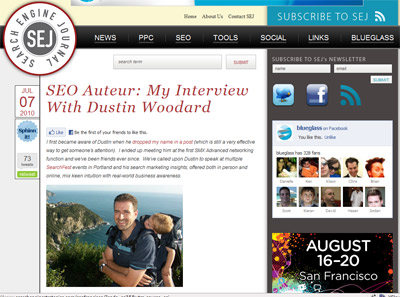 Yesterday I spoke at SMX Advanced for the first time (though I have attended all of them). My talk & our entire session’s presentations on link building/acquisition seemed to go really well. I was a little nervous as the room was full of 800+ of the world’s most advanced SEOs.
Yesterday I spoke at SMX Advanced for the first time (though I have attended all of them). My talk & our entire session’s presentations on link building/acquisition seemed to go really well. I was a little nervous as the room was full of 800+ of the world’s most advanced SEOs.
I assumed most of the audience knew about, or actively used, many of the tactics SEOs have been preaching for years–so I decided to focus on some things they may not have tried or even heard about, including gamification & the brain science behind of pitching. I also shared a case study of a client I took from blacklisted site with barely any links to > $1 million in revenue in just two months with no budget.
It may be a little confusing without my audio explanation to go with it, but I thought I’d share the slides with you below. I have three clients who use gamification and I’ve been going to gamification conferences for the past two years. I have an additional gamificiation experiment underway for a film I’m working on that I will be able to share at some point.
I really enjoyed speaking with Justin & Kaila and thought Elisabeth did a wonderful job of selecting panelists and coordinating the talks.


 Besides the conference sessions, there’s tons of great parties. This year I plan to attend
Besides the conference sessions, there’s tons of great parties. This year I plan to attend 